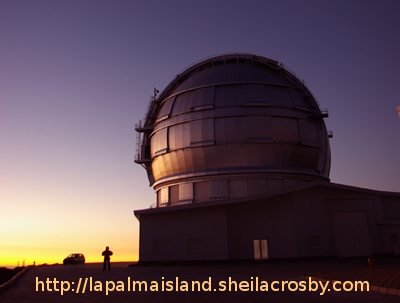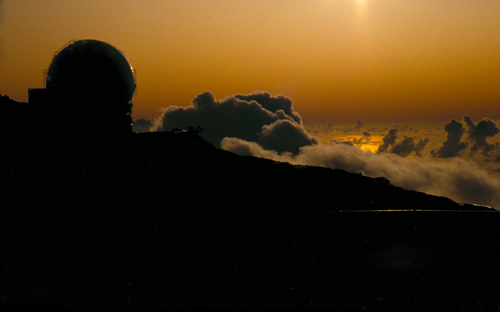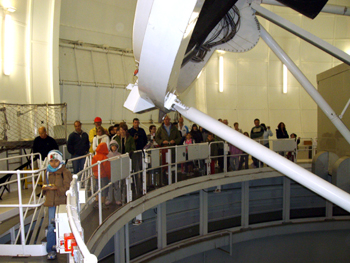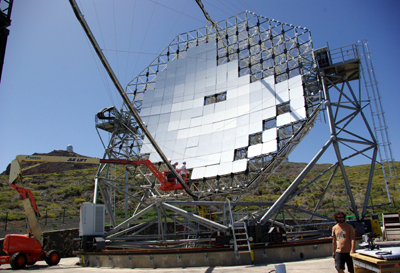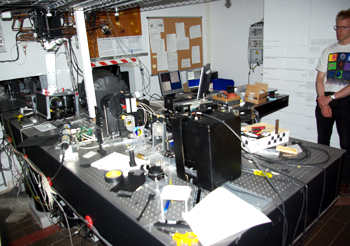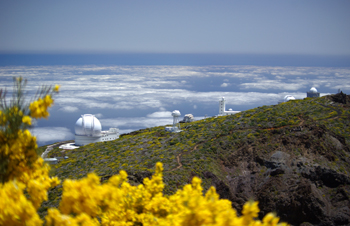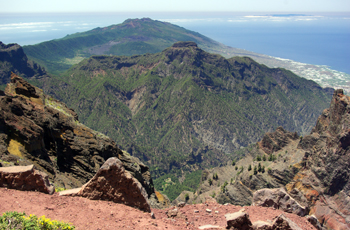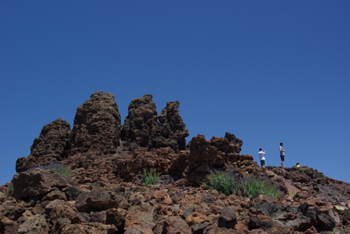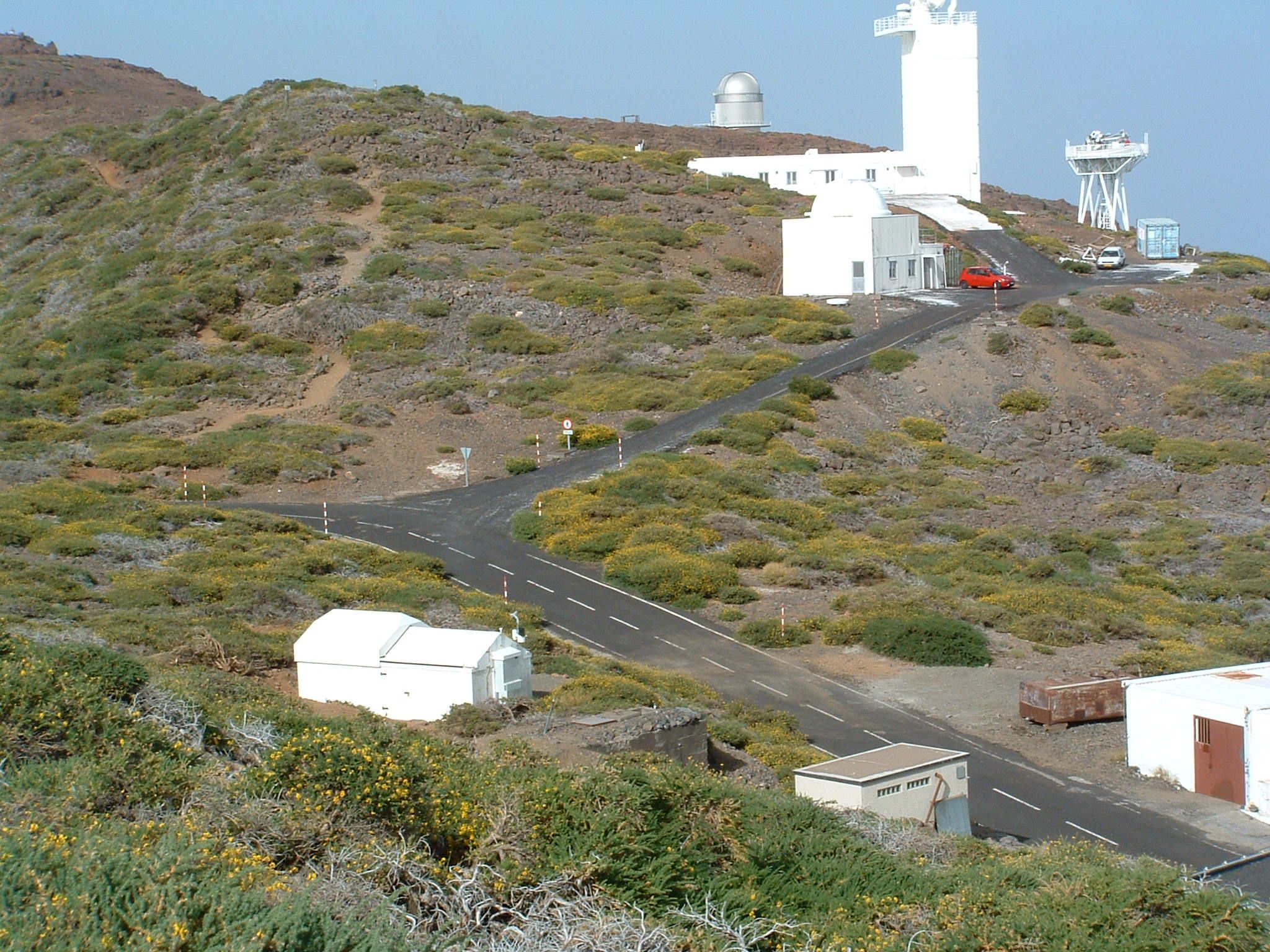
Most of the telescopes at the observatory here look spectacular even from the outside. SuperWASP looks like a big garden shed. It's the white thing at bottom left.
Even when it opens up, it still doesn't look like a professional telescope. To me, it looks more like a small missile launcher.
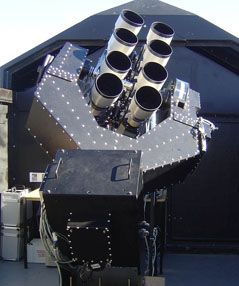
The equipment isn't that spectacular either. As modern telescopes go, it was built for peanuts. It has eight cameras, each with a Canon 200mm f/1.8 lens and a 2048 x 2048 pixel CCD. Most professional telescopes have the digital camera cooled by liquid nitrogen, to keep them down to about -170ºC. The colder they are, the less grainy the picture is. SuperWASP has peltier cooled cameras working at -50ºC, like a really dedicated amateur.
The spectacular bit it the results. WASP stands for "Wide Angle Search for Planets". It's found ten new planets in the last six months. These aren't in our Solar System. They're orbiting other stars. The three they netted last year made Time magazine's the "
Top Ten Science Discoveries of 2007".
It's quite a trick to find an extra-solar planet, because they don't shine themselves. True, they reflect light, just as Mars and Jupiter do, but that's only about 1/1,000,000th of the light of the parent star. It's like trying to spot a candle flame beside a tactical nuke. The first extra-solar planets were found by looking for stars wobbling as a large planet orbited close in.

Image: Wikipedia
But this only works for unusually large planets, unusually close in.
SuperWASP uses the transit method. It tries to spot a star getting 1% dimmer as a plant passes in front of it, blocking some of the light. This is a bit like trying to catch a spotlight getting dimmer as an ant crawls across it. And of course it only works if the planet's orbit is edge-on to us. But the great advantage of superWASP is that looks at 100,000 stars per camera per photo. Eventually they have to strike oil.

Lightcurve animation of a transit in HD209458, from Queen's University, Belfast, UK.
The catch is that you can't possibly look at 50Gb of data per night by hand. Computers take care of the routine part automatically, and produce a list of stars with fluctuating brightness. Then someone at either the Nordic Optical Telescope on La Palma, the Swiss Euler Telescope in Chile or the Observatoire de Haute Provence in southern France tries to catch the star wobbling. It it's wobbling and dimming in snych -- bingo!
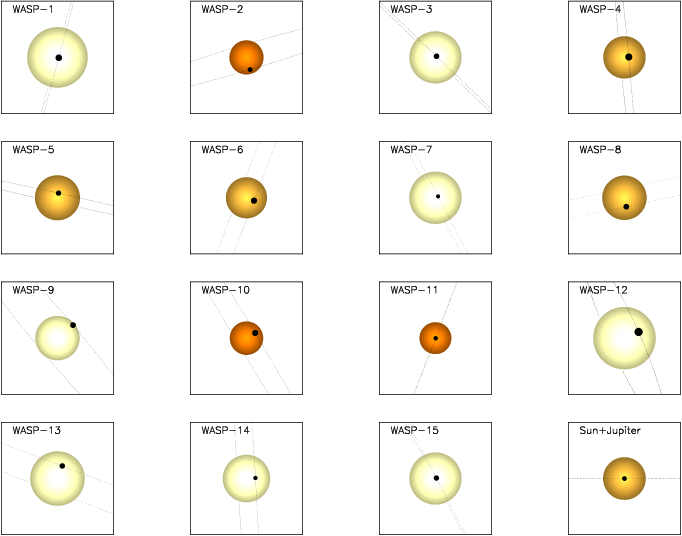
I still can't believe this works so well. And the really cool bit is that I used to know the team's leader, Dr Don Pollaco.
If you want to know more, see
http://star.pst.qub.ac.uk/wasp/Labels: astronomy, Canaries, Canary islands, La Palma, Roque de los Muchachos, Superwasp
Bookmark with:

 Del.icio.us
Del.icio.us
 Digg
Digg
 Reddit
Reddit
 Facebook
Facebook
 Furl It
Furl It
 Newsvine
Newsvine

